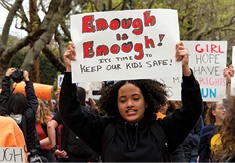Feature Facts: September 2022
Employee Assistance Programs

Many school districts have an employee assistance program (EAP) that offers free, confidential help to employees and their families to deal with a range of issues, including:
- Mental and emotional well-being
- Stress
- Family issues
- Substance abuse
Given the need to support the mental health of students and school staff, school leaders can ensure that employees are taking full advantage of EAPs, which Warman Hall, former principal of Aztec High School in Aztec, NM, says are a great resource. And if district employees aren’t aware of an EAP’s benefits, school leaders can ask their districts to spread the word about how the program works and what’s available to them.
Leadership Network for School Leaders of Color

NASSP’s Leadership Networks have given school leaders the space to discuss lived experiences and shared interests. Allison Persad, principal of the Young Women’s Leadership School of Astoria in Queens, NY, and Marcus Belin, principal of Huntley High School in Huntley, IL, are co-chairs of the network for School Leaders of Color. They attest to how valuable the network has been to its members, even after only a few meetings, and they wish something like it had been available to them earlier in their careers. Among the topics the group has discussed are:
- Unconscious bias
- Self-care and managing stress
- Perfectionist syndrome
- Tokenism
Engaging Parents in School

Every year, principals face the challenge of how to engage parents in the life of their schools. S. Kambar Khoshaba, former principal of Western Branch Middle School in Chesapeake, VA, offers examples of what has worked to strengthen the connection between home and school, including:
- Family fitness night
- A social justice council
- A parent advisory council
- Parent/student dodgeball
By creating events and opportunities for parents to be more engaged with their children’s school experiences, Khoshaba highlights how students reap the academic and social-emotional benefits.
The Value in Student Protest

Students at Smoky Hill High School in Aurora, CO, have organized many protests and walkouts in recent years. Principal Charles Puga welcomes such actions as a productive way for students to have a voice. “It’s not my school, it’s not the teachers’ school—it’s the community’s school,” he says. The key to ensuring that student protests go as planned is communication between students and the administration so that students know their rights as well as their responsibilities. Puga also lays out a set of guidelines for handling student protests at his school and shares tips for school leaders elsewhere.
